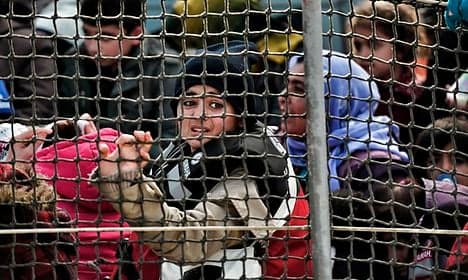Danish PM: EU can’t handle another year of refugee crisis

As EU leaders met in Brussels to negotiate British Prime Minister David Cameron’s reforms package, Lars Løkke Rasmussen told reporters that Europe has reached its breaking point in the ongoing refugee crisis.
“We need to find solutions that work. Because we cannot handle yet another year with an influx like they one we saw last year. Especially not if the burden continues to be borne by very few countries,” Rasmussen told reporters before Friday’s second day of talks.
Rasmussen and his fellow EU leaders on Thursday agreed to move forward on a German-backed plan for Turkey to stem the flow of migrants setting off from its coast.
German Chancellor Angela Merkel said that the EU-Turkey action plan is now “our priority” and Rasmussen agreed.
“Turkey is sitting with a sort of key. The way the Turks take action will have an impact on how many come,” Rasmussen said, as quoted by the Ritzau news agency.
The EU has promised to give Turkey €3 billion in exchange for efforts to The deal reached with Turkey calls for the nation to strengthen its border controls, tackle people-smugglers and take additional measures to keep more of the millions of refugees fleeing the Syrian conflict from crossing by sea to Europe.
Frustrated that the Turkey plan, which was agreed upon in October, is not yet working, Austria on Friday implemented a new daily cap on asylum seekers. The Austrian government has urged other countries on the Balkans route into Europe to follow suit.
In response, Slovenia, Croatia and Serbia have also tightened their borders.
In 2015, over one million people reached Europe's shores -- nearly half of them Syrians fleeing a civil war that has claimed more than 260,000 lives.
The vast majority enter the EU through Italy and Greece, where they should register, but poor controls mean most are able to continue their journeys to northern Europe.
Comments
See Also
“We need to find solutions that work. Because we cannot handle yet another year with an influx like they one we saw last year. Especially not if the burden continues to be borne by very few countries,” Rasmussen told reporters before Friday’s second day of talks.
Rasmussen and his fellow EU leaders on Thursday agreed to move forward on a German-backed plan for Turkey to stem the flow of migrants setting off from its coast.
German Chancellor Angela Merkel said that the EU-Turkey action plan is now “our priority” and Rasmussen agreed.
“Turkey is sitting with a sort of key. The way the Turks take action will have an impact on how many come,” Rasmussen said, as quoted by the Ritzau news agency.
The EU has promised to give Turkey €3 billion in exchange for efforts to The deal reached with Turkey calls for the nation to strengthen its border controls, tackle people-smugglers and take additional measures to keep more of the millions of refugees fleeing the Syrian conflict from crossing by sea to Europe.
Frustrated that the Turkey plan, which was agreed upon in October, is not yet working, Austria on Friday implemented a new daily cap on asylum seekers. The Austrian government has urged other countries on the Balkans route into Europe to follow suit.
In response, Slovenia, Croatia and Serbia have also tightened their borders.
In 2015, over one million people reached Europe's shores -- nearly half of them Syrians fleeing a civil war that has claimed more than 260,000 lives.
The vast majority enter the EU through Italy and Greece, where they should register, but poor controls mean most are able to continue their journeys to northern Europe.
Join the conversation in our comments section below. Share your own views and experience and if you have a question or suggestion for our journalists then email us at [email protected].
Please keep comments civil, constructive and on topic – and make sure to read our terms of use before getting involved.
Please log in here to leave a comment.